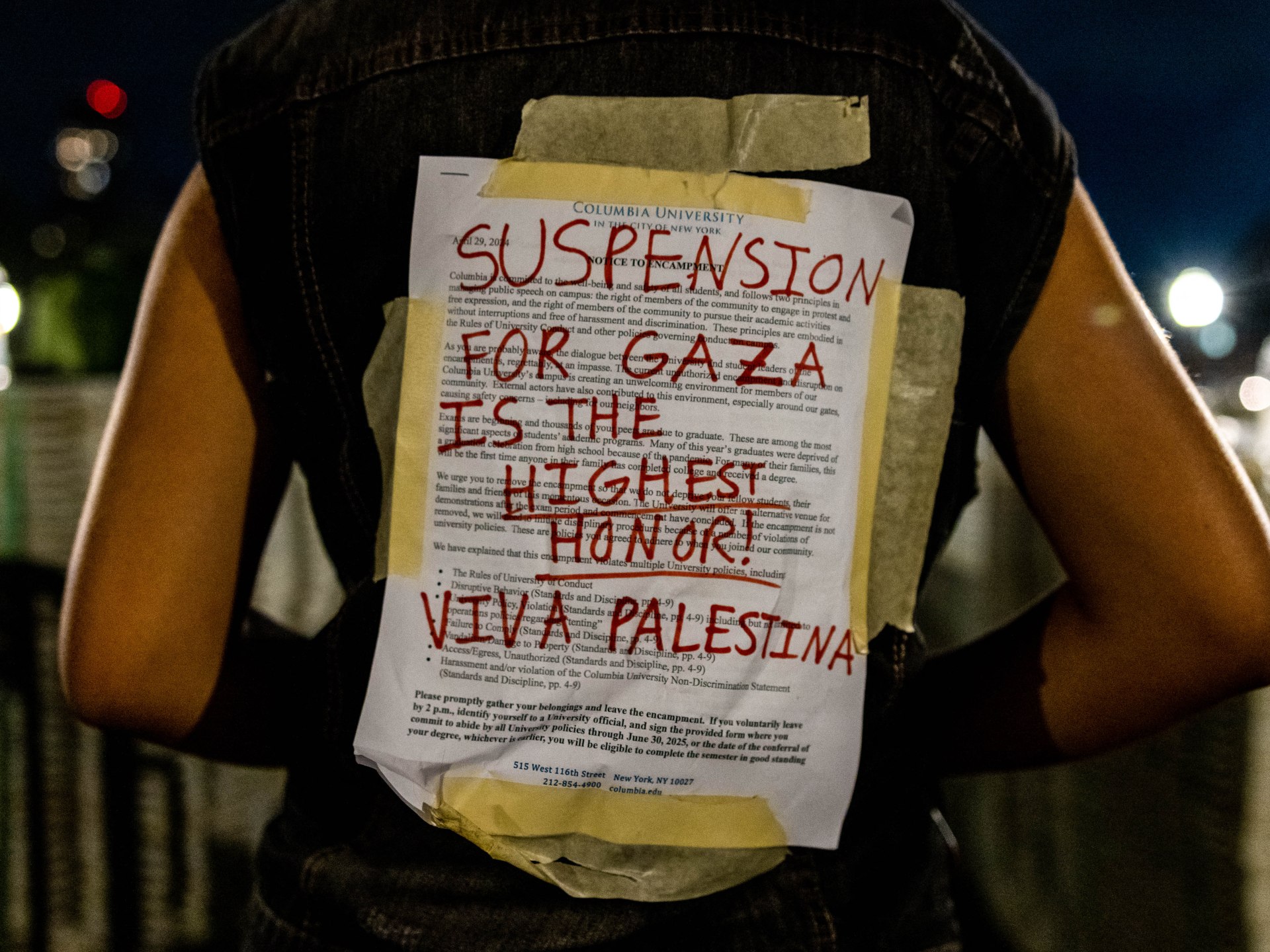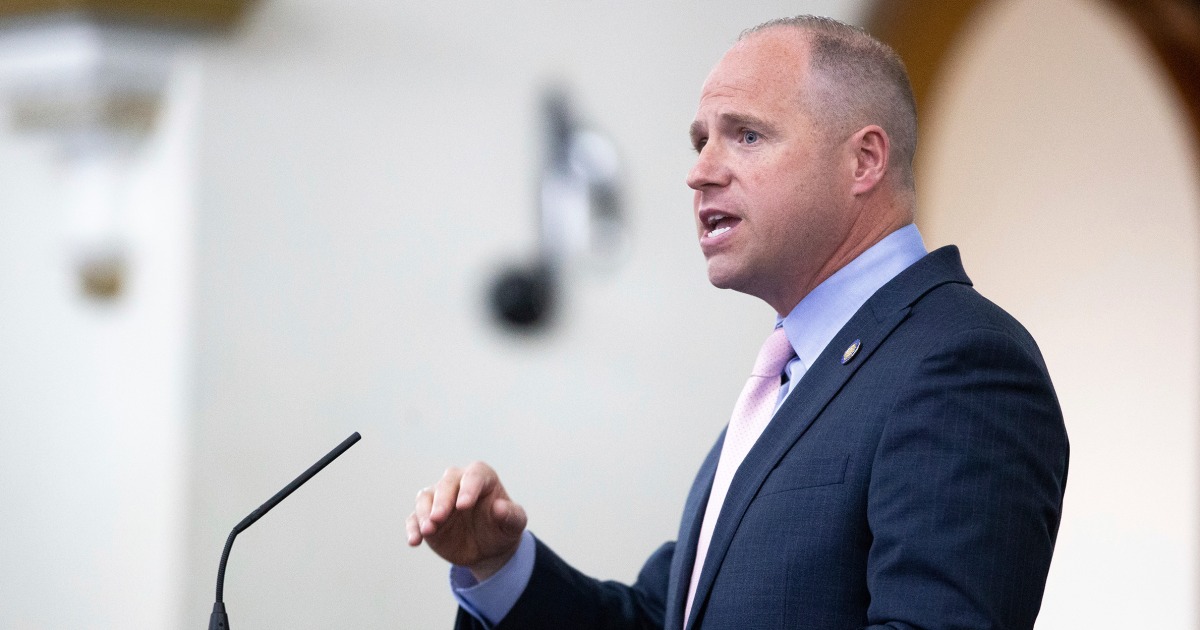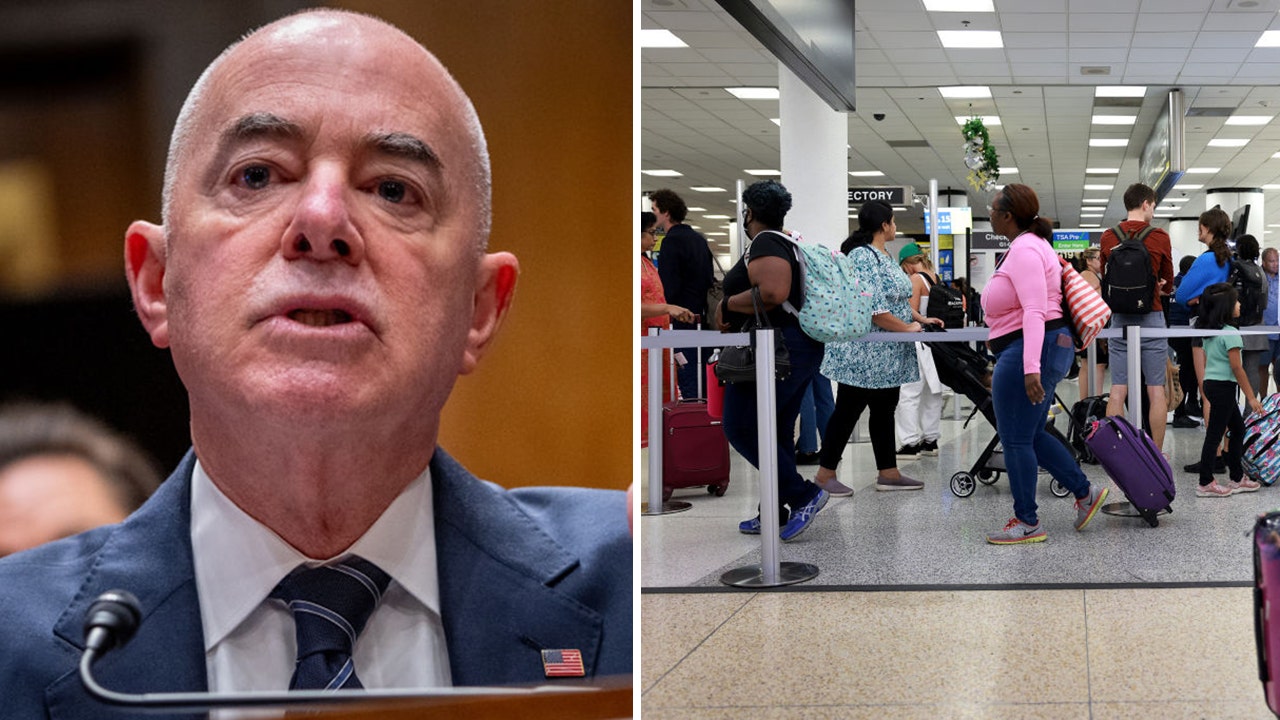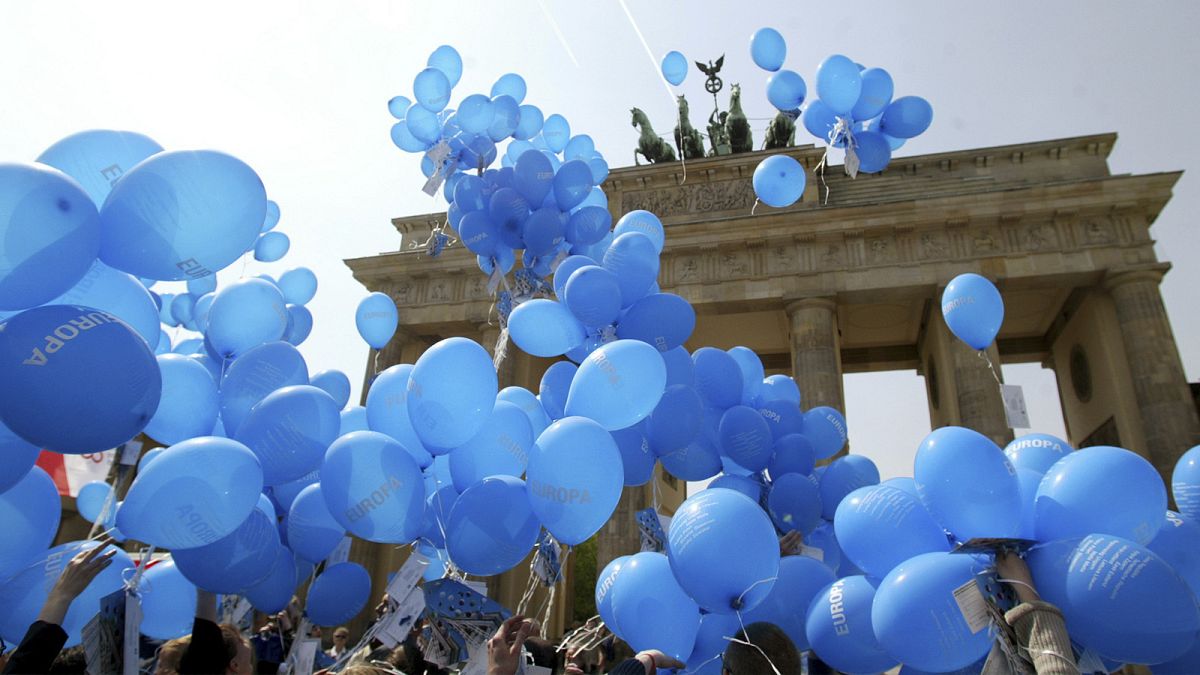Hawaii
Why Hawaii is becoming a leader in U.S. EV adoption
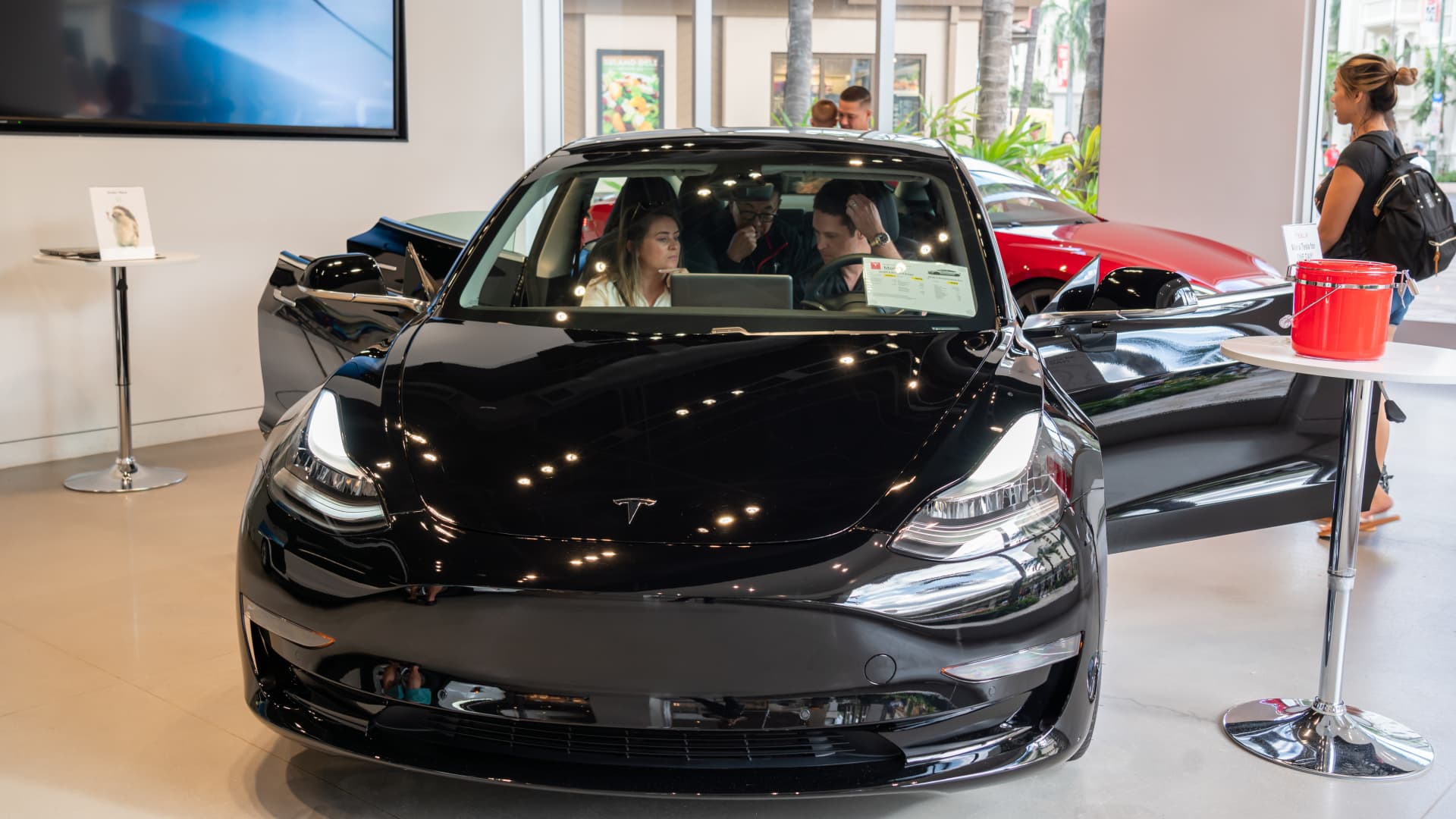
Customers admire a Tesla Model 3 electric vehicle at a Tesla store in Honolulu, Hawaii.
Alex Tai | SOPA Images | Lightrocket | Getty Images
U.S. consumers have been making the move to all-electric vehicles more slowly than many expected — but a growing leader in EV adoption is Hawaii.
The tropical island state this year ranks fifth in overall EV adoption at 11.9% of new retail vehicles sold through February, according to J.D. Power.
Hawaii also ranks third – behind only California (46.1) and Washington (37) – in J.D. Power’s “EV Adoption Score,” which is weighted based on market, consumer preference and EV availability, among other conditions, with a score of 33.8.
“We measure adoption relative to availability, meaning shoppers need availability of EVs that meet their needs … before they can even consider adopting,” said Elizabeth Krear, vice president of the electric vehicle practice at J.D. Power. “In California, the quantity of EVs is much higher than in Hawaii. But when consumers are given a viable option, 33% are choosing to buy the EV.”
Hawaii also is the top state for EV adoption that hasn’t agreed to the California Air Resources Board’s Zero-Emission Vehicle program, according to J.D. Power. Those rules promote EVs and include stricter vehicle emissions and miles per gallon standards for traditional vehicles in places that have adopted the measure, including the other top five states: California, Washington, Oregon and Colorado.
Why Hawaii?
What’s going on in Hawaii that’s leading to more consumers opting for EVs? It’s a mix of things but mainly high fuel costs, the availability of renewable energy for charging and culture, according to Ivan Drury, director of insights at auto research firm Edmunds, who lives in Waikiki on Hawaii’s Oahu Island.
“There is a higher sense of responsibility towards stewarding the land versus most mainland states. If you look up ‘Aina’ in Hawaiian, you see what I mean, lots of pride for the land,” he said.
Drury also said the popularity of hybrid models in the state (at 19% in 2023) has helped in the switch to EVs, and road trip concerns – a hurdle for some buyers in the U.S. – aren’t really a problem in Hawaii.
“We’re on an island. No one is really worried about road trips unless they live on the Big Island,” he said. (For reference, the “Hawaii Belt” around the Big Island, or Hawaii Island, is only about 260 miles.)
Gasoline prices also play a factor, as they do in other states, such as California. The average price for a gallon of gas in Hawaii is about $4.72, according to AAA. That’s the highest in the U.S. other than California and $1.10 higher than the national average of $3.62 a gallon.
J.D. Power reports the top-selling EVs in the state are the Tesla Model Y, Tesla Model 3 and Ford F-150 Lightning.
“I’m really happy. I like the car. I like not buying gas,” said Scott Sageman, a 2021 Tesla Model 3 owner who has lived on Hawaii’s Big Island since moving from California in 2020.
Aloha Kia Leeward in Waipahu, Hawaii
Aloha Kia
Russell Wong, regional vice president of Aloha Kia’s seven stores in Hawaii, said customer interest in EVs continues to grow but the vehicles still remain only about 2% of the stores’ sales.
“While it is a significant percentage of our current sales compared to other dealers or other markets, it’s still a very, very small percentage,” he said. “We do see that continuing to climb.”
Wong said there’s been a lot of interest in Kia’s new EV9 SUV that’s just arriving to dealerships. The current top-selling EV at the Kia dealerships is the Niro, which also is Kia’s least expensive all-electric vehicle, and Aloha Kia has priced it starting at about $36,000.
EV concerns
Although Hawaii is embracing electric vehicles more than some of its peers, it still has many of the same problems with EV adoption that the U.S. mainland does, including lack of charging infrastructure, affordability and a dearth of vehicle choices.
A Gallup poll released Monday found less than half of U.S. adults, 44%, say they are either “seriously considering or might consider” buying an EV, which is down from 55% in 2023. The proportion not intending to buy an EV has increased from 41% to 48%.
Sageman, who lives on the slope of a volcano, said he has not experienced problems charging, as he does so at home, but the estimated range of his Model 3 can be less than expected due to the state’s hilly terrain.
“The one thing that I’ve noticed is you do not pay too much attention to the estimated range,” he said. “You’re not going to get the same amount if you’re doing a lot of uphill driving.”
The average cost to a consumer buying an EV from a franchised dealer (excluding Tesla, Rivian and other direst-to-consumer brands) in Hawaii this year is more than $62,600, according to Edmunds. That’s down from more than $68,500 last year and roughly $12,700 over the average price of a vehicle in Hawaii.
High prices are a national and Hawaiian trend. Upper-income Americans across the country are the subgroup most likely to own an EV, with 14% doing so, up from 6% last year, according to the Gallup report.
“We’re sort of at the extreme ends of adoption,” Drury said. “For those in a position to take advantage of an EV, it works, sold. For those that it doesn’t, it won’t, for a very long time. Overcoming the obstacles of infrastructure and high costs of living aren’t something that can be taken care of overnight or even within a few years.”

Hawaii
Hawaii Travel Update: Kalaupapa Remains Closed As Oldest ‘Patient’ Celebrates 100th Birthday

View of the Kalaupapa Peninsula, where leprosy patients once lived in forced isolation.
A very special birthday was recently celebrated in Hawaii: Earlier this month, on April 12th, the oldest “patient” living on the historic Kalaupapa Peninsula, John Arruda, celebrated his 100th birthday.
Turning a hundred is a monumental occasion regardless of where you live and what your story is; however, this centennial celebration carried a bit more weight given the circumstances surrounding his life and residence.
A Historic Birthday in a Historic Place
The Kalaupapa Peninsula is located on the north shore of Molokai and is one of the most unique places in all the islands.
In the mid-1800s, a leprosy epidemic broke out in Hawaii. Worried that it would spread too rapidly through the population, the Hawaiian Monarchy sent all those infected with the disease into forced isolation on the Kalaupapa Peninsula, which is walled off from the rest of the island by tall sea cliffs and the ocean.
From the mid-1800s until the mid-1900s, about 8,000 people were sent to Kalaupapa to live and die, alongside other infected patients, in quarantine.
It wasn’t until after World War II that modern-day treatments for leprosy became available and allowed the forced isolation to end. Many patients – now technically former patients – decided to stay at Kalaupapa, however, as it had become their home.
Today, eight former patients, including Arruda, remain on the register at Kalaupapa, some still living on the peninsula.
“John’s refusal to be defined by adversity, and his determination to embrace life with boundless energy and joy, are an invaluable testament to the power of hope and the human spirit,” Governor Josh Green wrote in a public tribute. “His tireless advocacy for the preservation of Kalaupapa’s legacy serves as a powerful reminder of the importance of honoring our shared history and cherishing our communities, and his infectious laughter and zest for life are a constant source of inspiration to those around him.”
In 1980, Kalaupapa became a National Historic Park and eventually opened to visitation by the general public. Tours welcomed 100 people per day and showcased what life was like on the peninsula during the height of the epidemic.
Close, But Still Closed
But now, the birthday celebration comes as Kalaupapa enters its 5th year of closure following the COVID-19 pandemic. All health restrictions have been lifted, but a combination of factors has kept the Park closed, including the safety of trails, a restructuring of flights into and out of the peninsula, and a unique tour operator arrangement, among others.
Pressure has been heating up of late for the National Historic Park to reopen to visitors, and Park staff recently said it was “close” to reopening. But for now, travelers heading to Hawaii this year should be aware that this particular National Park site remains closed and inaccessible.
You can read the full story of Kalaupapa’s history and the hurdles of its reopening in a recent article on CNN for National Park Week.
Hawaii
Hawaii’s 2021 Red Hill jet fuel leak sickened thousands — but it wasn’t the first: “The system has failed us”

The week of Thanksgiving in 2021 quickly turned from one of fun with family and friends to something described as “post-apocalyptic” on the Hawaiian island of Oahu. Jet fuel had unknowingly leaked from the Department of Defense’s largest underground fuel storage facility and seeped into the system that provides drinking water to thousands of military families and area residents.
Within days, “we were all fighting over water,” Mai Hall, who is Native Hawaiian and a military spouse, told CBS News.
“It was all over the neighborhood. … I was crying putting tape over the faucets because I just could not believe that I couldn’t drink the water, water that has been here for centuries,” she said. “…The system has failed us.”
Hall’s family is one of many still feeling the impacts of that jet fuel exposure even today. But that leak wasn’t the first that has occurred at the U.S. Navy’s Red Hill Bulk Fuel Storage Facility — and it wasn’t the last.
Red Hill’s long history of issues and warnings
The Red Hill Bulk Fuel Storage Facility was built in the early 1940s under a mountain ridge near Honolulu, Hawaii’s capital city, and consists of 20 steel-lined tanks encased in concrete. Each of those tanks is 250 feet tall, 100 feet in diameter and can hold roughly 12.5 million gallons of fuel — large enough to fit the Statue of Liberty from the top of the base to the torch.
Ernest Lau, manager and chief engineer of the Honolulu Board of Water Supply, told CBS News that the Navy’s records show at least 72 documented fuel releases from the facility.
“Probably over 180,000 gallons of fuel of different types that has been released over its 80-year history,” Lau said.
Navy Closure Task Force–Red Hill, which is overseeing the defueling and permanent closure of the site, told CBS News that while reports have identified approximately 70 fuel releases since the site was opened in 1942, the Navy has “accepted 58 of those claims” as part of a 2021 Contested Case Hearing. The Navy is working on confirming the number of releases of fuel and aqueous film forming foam (AFFF) —a fire suppressant that contains PFAS, otherwise known as “forever chemicals” that have been linked to a wide range of health issues, including cancers.
The most recent of those major fuel spills was in the fall of 2021, impacting Hall’s family. Initial reports from the Navy indicated there was a spill of 14,000 gallons at this time, but it was later determined that 19,377 gallons of jet fuel spilled when a cart hit and cracked a fire suppression system pipe that had been containing the fuel since it leaked out of a tank earlier in the year.
But two years before that, a risk analysis conducted by the Navy found a 27.6% chance “of an initiating event resulting in a fuel release between 1,000 and 30,000 gallons.”
That analysis was conducted after a spill was announced at the facility on Jan. 13, 2014, which at the time was holding three types of fuel — JP-5, JP-8 and diesel marine fuel, all of which are known to be harmful to human health when chronically exposed. The leak occurred when one of the underground tanks “experienced a release of 27,000 gallons of fuel due to a contractor’s error and an ineffective response and oversight,” the Navy says on its website.
The EPA wasn’t verbally notified until three days later and written notification to the EPA wasn’t issued until 10 days later.
“They didn’t even know that a spill had happened until someone actually checked on the tank and noticed that there was about a foot and a half of fuel that was missing,” Kamanamaikalani Beamer, a professor at the University of Hawaii Center for Hawaiian Studies, told CBS News. At the time, he was serving on the Water Resource Management Commission.
“The tanks are severely corroded,” he said. “I mean some of them, less of the thickness of a dime is the barrier between 100 million gallons of fuel and leakage.”
The task force told CBS News that “all fuel tanks experience corrosion” and that the Navy used “several strategies” to counteract it, including tank cleaning, inspection and repair, a process known as TIRM.
At the time of the spill, Beamer questioned Navy officials during meetings with the commission about the extent of the issue and how it could have occurred. He believes the incident was “probably the first large-scale spill that really caught everyone’s attention.” And while the Navy ultimately agreed to an Order of Consent with the health department, EPA and others, the commission still “worried that it might fail,” Beamer said.
“They assured me this would never happen again. This was just because of one faulty tank and they were going to come up with a whole system to fix the tanks,” he said. “…They assured me it was the most state-of-the-art facility. They looked me in the eye and told me … ‘We drink from the same aquifer as everyone, we would never poison our own people.’ And they lied, they lied about all of it.”
“We take our environmental stewardship seriously,” Capt. Mark Wheeler, the commander officer at the time of the Fleet Logistics Center Pearl Harbor, said in a press release about the incident. “Our military personnel and families live here and drink the water, too.”
The 2014 spill was not the only incident involving Red Hill and other Naval operations.
“There were a number of warnings,” Wayne Tanaka, director of the Sierra Club of Hawai’i, told CBS News. “…There’s been multiple instances where even under the extreme scrutiny that was being applied to the Red Hill facility, the Navy simply could not operate in a manner that was safe for the environment and safe for people.”
As far back as 2017, the EPA said the “aging” facility posed a “significant environmental threat to Oahu’s groundwater.”
An Administrative Order on Consent between the EPA, Hawai’i State Department of Health, the U.S. Navy and the Defense Logistics Agency in 2015 shows that the Navy’s first-ever report to the Department of Health over a leak at the facility was in November 1998, “when petroleum-stained basalt cores were discovered beneath the tanks.” In the early 2000s, staining was found beneath 19 of the 20 tanks.
In 2012, the Hawai’i DOH issued an $80,000 fine to the Navy Public Works Center Makalapa Compound, a base yard for maintenance activities for Pearl Harbor Navy Region Hawai’i, after an inspection the year prior found they “failed to make a hazardous waste determination for corrosive wastes generated.” Instead of handling materials as hazardous waste, the DOH said they were “disposed of in the trash,” and that hazardous paints and fuels were stored in open containers, violating requirements.
A December 2021 emergency order from the Hawai’i DOH shows a litany of issues stemming from the facility.
On March 17 and June 2, 2020, there was a “release of a regulated substance to surface water.” And then in May 2021, just months before the catastrophic jet fuel leak at Red Hill, 1,618 gallons of fuel was released from a pipeline, 1,580 gallons of which was recovered. The missing fuel was “released into the environment,” the order says.
Two months later, another 150 gallons of a “regulated substance” was released at Kilo Pier into the surface water, roughly 110 gallons of which was recovered.
“Given the number of incidences that have occurred at the Facility within the last year, and in view of the current drinking water contamination, the Respondent [the U.S. Navy] has not demonstrated that immediate and appropriate response actions are available, and therefore cannot ensure that immediate and appropriate response actions will be available should another release occurs in the future,” the order states. “The risk of any additional contaminants in the aquifer or lack of immediate action now may exacerbate the current situation and further jeopardize our aquifer system.”
Despite long standing issues, Tanaka said it wasn’t until the November 2021 incident that local and federal officials took significant action.
“And that’s really scary because we can’t afford to have another incident like this happen again,” he said. “…The state has likened [Red Hill] to a ticking time bomb. … So the threat is immense. The threat is existential.”
As fuel spill victims head to trial, Navy continues effort to shut down the site
On Monday, victims who were impacted by the 2021 fuel contamination headed to trial to seek financial compensation from the U.S. government. Many of those who drank, bathed in and used tainted water for dishes and laundry say they are still dealing with various health impacts, including children.
The trial comes just under a year after attorneys for the Department of Justice filed a joint stipulation that stated “the United States does not dispute” the 2021 spill “caused a nuisance” and that the U.S. “breached its duty of care to the Resident Plaintiffs to exercise ordinary care in the operation of Red Hill.”
Since the 2021 spill and an additional leak of AFFF in 2022, the DOJ has ordered the permanent closure of the site. As of April 2024, “the vast majority of fuel and AFFF concentrate have been removed from the facility,” the task force told CBS News. However, there are still thousands of gallons of contaminants that remain in the site.
The task force said there’s an estimated 28,000 gallons of sludge in the 14 tanks. That waste is a mixture of fuel, water, direct, metal particles and microorganisms that form at the bottom of fuel tanks. Once removed, it will be stored in hazardous waste containers to be disposed of on the U.S. mainland.
There is also an estimated 4,000 gallons of residual fuel that must be removed from across nearly 10 miles of pipelines, the task force said.
“Our team will remove residual fuel before removing small sections of pipe, applying exacting safety protocols for each activity. The risk to the environment has been significantly reduced after removing approximately 104 million gallons of fuel during defueling and with the recent removal of over 1,000 gallons of AFFF from the facility,” the task force said, adding that the AFFF had been a “major threat to the aquifer.”
Tank cleaning operations could start soon, and will take place two tanks at a time. It’s expected that the cleaning process will take roughly 2 and a half years to complete. Removing the pipeline system will also take about 2 and a half years.
The task force added that “the health and welfare of all Navy drinking water users is the most important priority,” and said it will “continue our work to ensure the water continues to meet and comply with all state and federal safe drinking water requirements.”
Hawaii
Cancelation of ‘NCIS: Hawaii’ causes economic blow for Hawaii’s economy

HONOLULU (HawaiiNewsNow) – The recent news of the cancellation of “NCIS: Hawaii” is disappointing to fans and is dealing an economic blow to Hawaii’s economy.
Many are surprised by the cancellation.
Eugene Price, the owner of Honolulu design firm PD Technologies, says the show earned him $50,000 last year.
“Very good business. We are one of the few people they come to on a regular basis,” Eugene Price.
“We were very, very surprised. They are valuable to Hawaii; they employ so many people.”
Rachel Whitley was the Hawaii casting director for all three seasons and said she was shocked by the cancellation.
“It creates hundreds of hundreds of jobs. Not just actors, but stand-ins and stunt doubles,” Whitley said.
Hundreds of comments are pouring in online, with many confused since the show averaged more than five million viewers.
Longtime Casting director Katie Doyle says fan support and ratings are good, but more is needed.
“It’s no longer about the ratings. It’s about the money. It’s about what it costs to produce that show here,” Doyle said.
Whitley estimates CBS spent $75 million a season on ‘NCIS: Hawaii.’
It’s why other locations are competing for productions.
“We have several films that were filming already here, and all of a sudden it up and moved to New Zealand because it came too cost prohibitive,” Doyle said.
The state does offer tax incentives, but industry insiders say they still aren’t enough.
More than 15,000 fans have signed a petition calling on CBS to change its decision.
That is also likely not enough.
“It’s very sad for many of us, but it could be a wake-up call.”
Back in West Oahu, UH has selected a developer to build a state-of-the-art film studio, but it’s still years away from becoming a reality.
Copyright 2024 Hawaii News Now. All rights reserved.
-

 Education1 week ago
Education1 week agoVideo: Dozens of Yale Students Arrested as Campus Protests Spread
-

 World1 week ago
World1 week agoEU sanctions extremist Israeli settlers over violence in the West Bank
-

 World1 week ago
World1 week agoShipping firms plead for UN help amid escalating Middle East conflict
-

 Politics1 week ago
Politics1 week ago'Nothing more backwards' than US funding Ukraine border security but not our own, conservatives say
-

 Politics1 week ago
Politics1 week agoDemocrats hold major 2024 advantage as House Republicans face further chaos, division
-

 Politics1 week ago
Politics1 week agoFetterman hammers 'a–hole' anti-Israel protesters, slams own party for response to Iranian attack: 'Crazy'
-

 World1 week ago
World1 week agoPeriod poverty still a problem within the EU despite tax breaks
-

 Politics1 week ago
Politics1 week agoA battle over 100 words: Judge tentatively siding with California AG over students' gender identification



